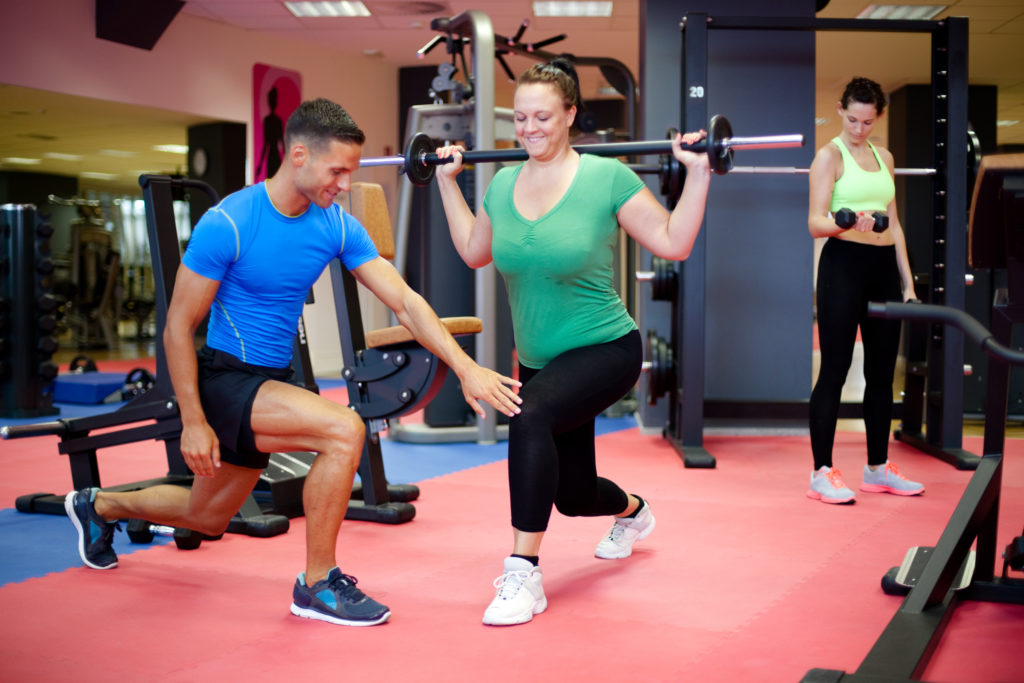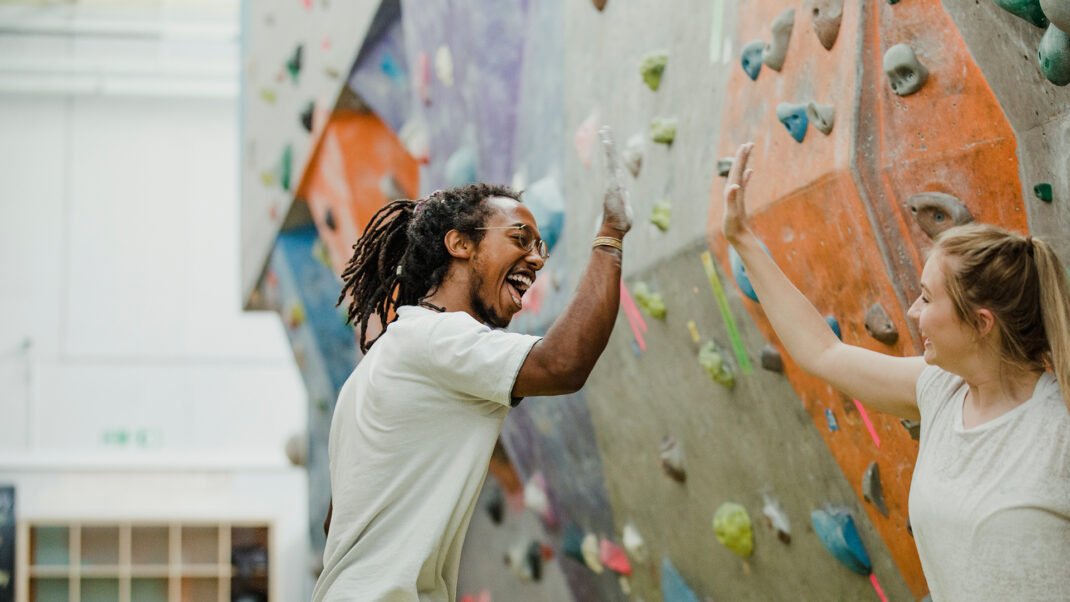
Humans aren’t strangers to change. We take U-turns, cancel dinner plans and reschedule business meetings. If these kinds of change are so easy, then why is behavior change, changing habits or patterns, so difficult?
Mostly, it’s because human behavior is complex and mystifying. People struggle to “unlearn” old habits and replace them with new behaviors. But once behavioral changes evolve into new habits, they become instinctive. Igniting change in clients requires honoring the complexities of behavior and recognizing the efforts required to repattern a lifestyle.
Fitness professionals are uniquely positioned to be influencers of lifestyle change. By integrating sound, scientific health education efforts into our programming practices, we can elevate the quality of care that clients receive. This is not just about physical and nutritional health—it’s about lifestyle renovation and balance. Behavior change is the avenue that allows clients to achieve that balance.
Decades of research have provided crucial clues to the forces that influence our ability to change behaviors. This article reviews the conclusions of current research to help you guide your clients toward habits that make healthy change a vital part of their lives.
Early Theories on Behavior Change
Behavior modification theories have been exhaustively studied for over a century. In the 1920s, Ivan Pavlov’s studies of dog behavior helped American psychologist John B. Watson understand the complexities of human behavior. In the 1950s, B.F. Skinner explored operant conditioning and ways in which behavior is connected to rewards and punishment. In the 1980s, Albert Bandura published his “social learning theory” (ACE 2013).
These studies produced models or frameworks describing forces that influence human behavior. Popular models include the Health Belief Model, the Theory of Planned Behavior, the Theory of Reasoned Action, the Integrated Behavioral Model and the Transtheoretical Model (see the sidebar “The Transtheoretical Model of Behavior Change”) (Glanz, Rimer & Viswanath 2015). Research also supports the effectiveness of strategies such as motivational interviewing and cognitive behavioral coaching.
Behavior change psychology has immense value to personal trainers and other fitness pros. “I think that behavior change strategies have long been a piece of the training for fitness professionals. The widespread recognition of the importance of fitness professionals developing competence in behavior change strategies has been more recent,” says Natalie Digate Muth, MD, MPH, RDN, FAAP.
Margaret Moore, founder and CEO of Wellcoaches® Corporation, notes a few of the most pivotal research findings that apply to the fitness industry:
- Only 20% of people are prepared to change health behaviors. Fitness programs target these change-ready people.
- Improving readiness to change requires a lot of cognitive work to inspire autonomous motivation and build confidence.
- Positive emotions and psychological resources are precursors to change that develop resilience and help to keep the focus on learning and growth rather than success—which can easily slip into failure.
See also: Changing Behavior Changes Lives
Review of Current Behavior Change Literature
The following studies offer unique insights that challenge the fitness industry to think higher, wider and deeper about coaching clients through a mental metamorphosis. The concepts will seem familiar if you’re already up to speed on the Transtheoretical Model (TTM), motivational interviewing and self-determination theory.
If you’re unfamiliar with the six phases and 10 processes of TTM, take a few minutes to look over the sidebar below, then return here to check out five current studies on behavior change.
TTM, Body Satisfaction and Activity Levels
Study reviewed: Johnson, P., et al. 2012. Body satisfaction is associated with Transtheoretical Model constructs for physical activity behavior change. Body Image, 10 (2), 163–74.
Johnson and colleagues used the Transtheoretical Model to explore connections between body image satisfaction and physical activity. The challenge is straightforward: If we understand how body image influences our desire to exercise, then we can craft programs that address these influences.
Researchers conducted two studies that sent 1,887 undergraduate college students and community members a questionnaire examining body satisfaction, leisure-time exercise, stages of exercise change, barriers to efficacy, temptation not to exercise, decisional balance and processes of change. These are all central components of TTM.
The study found a positive association between body image and self-efficacy, processes of change and decisional balance—but only when isolating people in the TTM’s maintenance and termination stages. In essence, body image played a notable role in only the last two of the TTM’s six stages.
In an unexpected turn that refuted one of the scientists’ initial hypotheses, study data showed that in the early stages of change, higher levels of body satisfaction correlated with greater temptation to avoid exercise. Thus, study participants who felt good about their bodies were less likely to engage in enough physical activity to attain health benefits.
The relationship reversed in the later stages, when a significant association emerged between greater body satisfaction and the tendency to stay physically active both in the short run (>6 months) and in the long run (>5 years).
Relevance and application: Fitness professionals and clients alike are bombarded with appearance-oriented dogma. We share a strong urge to change something about our outward appearance—bulking up, slimming down, toning this or shaping that.
The evidence from this study suggests we should drop our obsession with body image and focus on staying healthy vs. sculpting “six-pack” abs. Fit pros can try these tactics:
- Coach clients to be more aware of victories that don’t show up on the scale (boosted energy, better sleep, improved mood, enhanced confidence).
- Encourage clients to discuss and journal what they like about themselves. Help them focus on what’s already wonderful about who they are and then build from there.
- Organize a social support network or group.
A February 2018 Fitness Journal article by Amanda Vogel, MA, challenged fitness pros to be more cognizant of their body language and to support body diversity in marketing and recruitment—championing a balanced lifestyle over a “skinny = fit” approach. This study supports her thesis that cultivating a healthier relationship with our bodies—not just building “better” bodies—is key.
See also: Signs the Fitness Industry Has a Body Image Problem
TTM and Sedentary Behaviors
Study reviewed: Ho, H., Gabriel, K.P., & Kohl, H.W. 2017. Application of the Transtheoretical Model to sedentary behaviors and its association with physical activity status. PLOS One, 12 (4), e176330.
This study applied the TTM to efforts to reduce sedentary behavior—a topic that’s been insufficiently addressed in the recent literature.
Focusing specifically on college students, researchers investigated motivational readiness to avoid being sedentary. It used TTM constructs to look for relationships between current physical activity and sedentary behaviors.
The study sent 225 college students in health education and physical education courses a questionnaire packet that collected information on their TTM stages of readiness to avoid sitting time, as well as on their processes of change, self-efficacy, decisional balance, past-week modifiable activity and multicontext sitting time. To objectively measure active and sedentary time, participants wore a triaxial accelerometer for 7 consecutive days.
Data analysis revealed that most of the students were sedentary but intended to change and/or interrupt long periods of sedentary time with movement. Interestingly, men and women showed different stage-of-change distributions for avoiding sedentary behaviors. Women were more sedentary than men, but more women identified with the TTM preparation stage, while more men identified with the precontemplation stage.
The researchers suggested that women have a greater tendency to progress to the TTM’s action and maintenance stages with regard to sedentary behaviors. Gender differences were noted with respect to TTM change processes. Women responded well to dramatic relief, environmental re-evaluation, self–re-evaluation and self-liberation. Men responded to consciousness raising, counterconditioning and stimulus control.
The study found no significant associations between TTM outcomes for sedentary behaviors and activity levels. Results did not reveal a significant relationship between sedentary behaviors and time spent actively engaging in movement. This suggests physical activity and sedentary behaviors are independent variables—not opposites of each other.
While the study had limitations, the design was unique in combining self-reported data with objective data collection measurements.
Relevance and application: The results of this study offer two valuable insights:
- Women and men respond differently to processes of change and use different strategies to change. This reinforces the need to take an individualized approach to coaching change and designing interventions.
- Promoting active living and reducing sitting time can be separate goals for clients.
See also: Group Fitness and the Stages of Behavior Change
TTM, Nutrition and Body Size
Study reviewed: Menezes, M.C., et al. 2014. Intervention based on Transtheoretical Model promotes anthropometric and nutritional improvements—a randomized controlled trial. Eating Behaviors, 17, 37–44.
This study staged a two-phase, TTM-based intervention targeting women in the Brazilian national healthcare system to test its influence on nutritional behaviors and body size (so-called “anthropometric” data).
The first phase identified stages of change. The second phase used group interventions based on participants’ stages of change.
The 71 women participated in a free physical activity and nutrition counseling program offered through the Brazilian healthcare system. Scientists assigned 31 women to a control group and 40 to an intervention group.
Data came from a questionnaire, body size measurements and five 24-hour dietary recall logs. Women in the control group maintained normal routine activity and had access to open-group nutrition education with monthly topics. In contrast, those in the intervention group were divided into a “pre-action” group (precontemplation to preparation stages) and an “action” group (action and maintenance stages).
TTM stage-specific interventions were implemented based on the women’s unique health and nutrition concerns. Those in the pre-action segment were guided with cognitive and experiential processes of change, while those in the action group were coached on behavioral processes of change. Interventions lasted 6 months and included 20 workshops.
Results of this study were consistent with past research on TTM interventions:
- improved dietary behaviors
- improved body size measurements
- weight loss
- more positive body image perception
These results should be interpreted with caution, however; the sample size was small, and the study did not produce evidence that the intervention groups maintained their initial results long term.
Relevance and application: Results of this study build on the body of literature supporting the effectiveness of TTM-based interventions.
“I think that the Transtheoretical Model is very helpful in tailoring the approach to take with a specific individual,” Muth says. “For instance, if someone seems very precontemplative—‘I don’t want to exercise’ or ‘My wife made me come’—then working to develop an action plan and expecting a person to start exercising is not useful or likely to be successful.
“Rather, a better approach might be to help the client progress to a contemplative stage (where most people likely are). In motivational interviewing, this is referred to as ambivalence. Here, coaching strategies can help clients start to ‘talk themselves into change’ and get to the next phase of planning for change (preparation), and then, finally, action.”
Promoting Activity in Adolescents With Obesity
Study reviewed: Gourlan, M., Sarrazin, P., & Trouilloud, D. 2013. Motivational interviewing as a way to promote physical activity in obese adolescents: A randomised-controlled trial using self-determination theory as an explanatory framework. Psychology & Health, 28 (11), 1265–86.
This French study used self-determination theory (SDT) to evaluate the effectiveness of motivational interviewing in promoting physical activity and reducing BMI in adolescents with obesity.
Scientists randomly assigned 54 adolescents aged 11–18 (41% female) to either a standard weight loss program or the same program plus six motivational-interviewing phone calls. The researchers expected to see a greater increase in physical activity and a greater decrease in BMI in the group receiving the calls.
The standard weight loss program consisted of two individual 30-minute sessions with a doctor who explained the relationship between physical activity and both physical and mental health; described the benefits of physical activity and costs of inactivity; and discussed goal-setting, self-monitoring and means of being active. The physician also provided feedback.
The motivational-interviewing component consisted of six phone sessions delivered by an exercise science graduate student. The interviewing process had four phases: awareness building, alternatives and problem-solving, goal and agenda setting, and behavior modification consequences and perspectives.
Data collection documented motivation, perceived competence, perceived autonomy support, self-reported activity, objective activity and BMI.
Data analysis showed that adding motivational-interviewing sessions increased activity by an average of 33 minutes and improved BMI (though a 6-month follow-up did not show a significant difference in BMI). These outcomes suggest that motivational interviewing is a valuable supplement to programs aiming to improve activity and weight loss in adolescents.
Relevance and application: Al—though this study was limited by its sample size and demographics, the results are promising. Motivational interviewing is a valid, widely accepted and meaningful strategy for successful behavior change (ACE 2013; Brehm 2014). “Fitness professionals who gain some degree of proficiency in motivational interviewing will see immediate value” (Muth 2015).
If you lack experience or knowledge in motivational interviewing, start by reading books on it and attending classes. “All fitness professionals should spend some of their continuing education time learning more about—and developing skills in—behavior change strategies, [including motivational interviewing,]” Muth says.
As you gain knowledge, begin practicing the technique to sharpen your skills. Devote time in your weekly plan to honing your skills and gathering feedback from mentors knowledgeable in motivational interviewing.
See also: Helping Teens with Obesity
Adding a Computer to Motivational Interviewing
Study reviewed: Friederichs, S.A., et al. 2017. Motivational interviewing and self-determination theory in a web-based computer tailored physical activity intervention: A randomized controlled trial. Psychology & Health, 31 (8), 907–30.
This study investigated the effectiveness of a web-based physical activity intervention grounded in self-determination theory and motivational interviewing.
Researchers divided participants into two groups:
- I Move (1,423 participants): an intervention based on self-determination theory and motivational interviewing.
- Active Plus (1,452 participants): a traditional intervention without self-determination theory and motivational interviewing. This intervention was rooted in a combination of constructs from other theories, such as Social Cognitive Theory, TTM and the Theory of Planned Behavior.
While both groups received four separate “intervention moments” via text messaging, the degree of interactivity was purposefully higher in the I Move design. For example, I Move was collaborative and conversational in nature, while Active Plus simply provided information. I Move used interactive strategies and empathetic reflections, whereas Active Plus encouraged self-monitoring of behavior and offered nondirectional advice.
I Move also addressed determinants of autonomous motivation—basic psychological needs for autonomy, competence and relatedness. Active Plus addressed awareness, knowledge, self-efficacy, modeling and attitude.
Data was collected at baseline and at 3- and 6-month intervals. In the end, it did not appear that I Move significantly outperformed Active Plus. However, data revealed a greater appreciation for aspects of the I Move intervention over the nondirectional style of Active Plus.
Relevance and application: Al—though computer-based activity programs seem counterintuitive, this study encourages deeper thought about how to use technology to our advantage. Collectively, the fitness industry should acknowledge its responsibility within the context of changing disease patterns, a shifting healthcare landscape, and the influence of technology on behavior communication and physical activity. Extreme, sophisticated advancements in technology connect us in meaningful ways and disconnect us in others. Fitness professionals can leverage the advancements to coach clients creatively.
The Take-Home on Behavior Change
Human behavior is dynamic and influenced by a number of factors—environment, social support, thought processes, body image, self-efficacy and motivation. This means behavior change is a psychological, psychosocial and individualized process. Change is generally a nonlinear process, which makes for a complicated journey. While the complexity of change is recognized and respected, it remains a mystery in many ways. To best serve our clients, we must first deepen our understanding of health behavior and of the methods and tools that will yield the greatest growth opportunities for each client.
We have challenging work ahead. We must learn to comprehend more fully not just why people change, but how they come to embrace and sustain change. Our role is to coach, reinforce and inspire our clients to become confident and capable travelers along the journey of change.
The Transtheoretical Model of Behavior Change
The TTM, often called Stages of Change, is one of the most comprehensive models for helping people modify their behavior. Combining behavioral, cognitive and temporal elements (Nigg & Durand 2016), the TTM is popular throughout the health coaching and fitness industries.
James Prochaska and Carlo DiClemente developed the TTM in the 1970s to improve the efficacy of smoking cessation programs (Glanz, Rimer & Lewis 2002). It integrates six stages of change with 10 processes that move people through the stages.
Decisional balance and self-efficacy are key components of TTM. Glanz, Rimer & Viswanath (2015) defined decisional balance as weighing the pros and cons of changing a behavior to determine if the benefits of change outweigh the perceived barriers or detractions. Self-efficacy describes a person’s confidence that he or she can manage high-risk situations without retreating to previous (and negative) beh
Erin Nitschke, MS, EdD
Professionally, I served as the Director of Health and Human Performance for a near decade at Sheridan College in Sheridan, Wyoming. I instructed courses in exercise science, physical education, and personal training. I am a writer, a fitness blogger, & higher education instructor for Laramie County Community College, Western Wyoming Community College, Northwest Community College, and the University of Wyoming. I have over 14 years of experience in personal training as well as adult education and instructional design. I believe in the power of a holistic approach to healthy living. Living an active and healthy lifestyle is not defined or limited by physical stamina, muscle size, or outward appearance. An active and healthy lifestyle is multifaceted and requires commitment and balance in all aspects of personal wellness. Being fit means finding an equilibrium between the physical, social, intellectual, environmental, occupational, and spiritual dimensions of personal well-being. I am personally and professi







